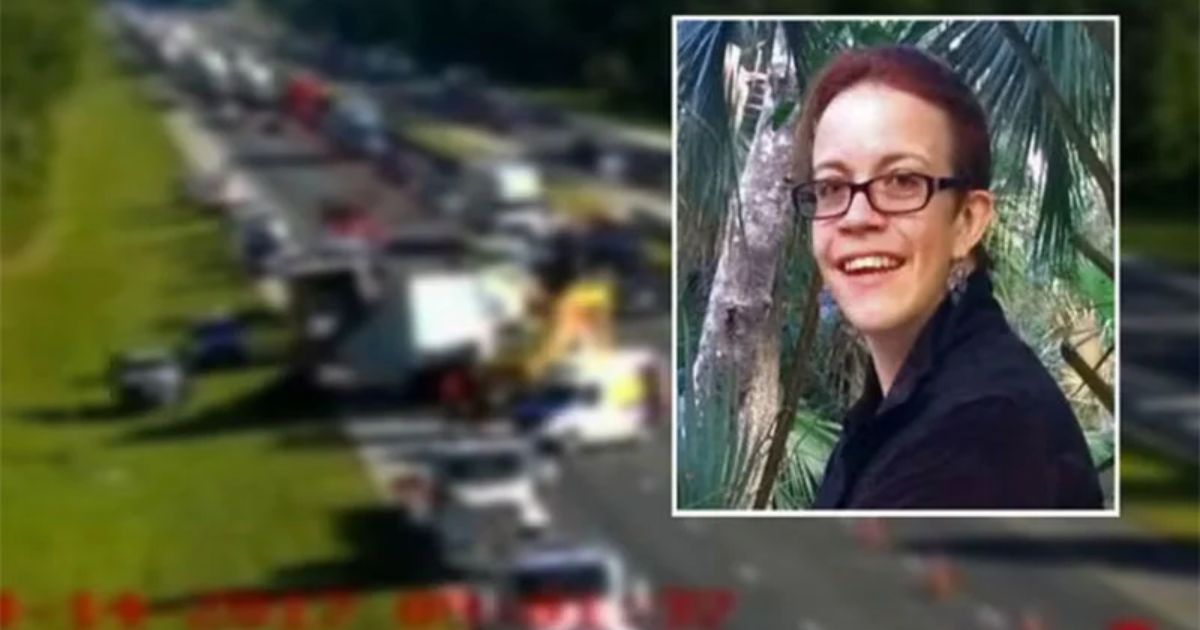Auto accidents are able to change a life in ways that are somewhat unexpected and sometimes even fatal. These are some of the cases that have received a lot of attention such as the car accident involving Brittany Johns. Brittany Johns’ fatal car accident is a sad story of how unpredictable driving is, particularly in dangerous situations.
This affected Brittany and her family, community, and anyone else who was acquaintances with her. This article gives a comprehensive description of the type of accident, details on how the accident occurred, and the consequences of the accident.
Brittany Johns Car Accident: Who Is Brittany Johns?
Brittany Johns was a vibrant young woman whose life was tragically cut short in a devastating car accident. Prior to this incident, she was known among friends and family as an energetic individual with a promising future ahead. The fatal crash that claimed her life occurred on September 7, 2022, an event that would later spark important conversations about road safety across communities.
What makes Brittany’s story particularly noteworthy is how it highlights the grave dangers of distracted driving. The driver responsible for the accident, Kenneth Williams, was reportedly engaged with social media at the time of the collision, demonstrating the potentially fatal consequences of smartphone use while operating a vehicle.
Brittany’s case has since become a powerful catalyst for road safety awareness initiatives. Her story continues to resonate with the public, serving as a sobering reminder of how quickly life can change on the road. Community members frequently reference her tragedy during discussions about traffic accident prevention and the implementation of stricter safety protocols.
Overview of the Incident
The tragic incident occurred on Interstate 55, a major highway with typically high traffic volumes and elevated speed limits. On the evening of September 7, 2022, law enforcement initiated pursuit of a red Pontiac Grand Prix that was traveling approximately 50 miles per hour above the posted speed limit. This excessive speeding immediately created dangerous conditions for all nearby motorists.
Weather conditions compounded the risk factors that night. Reports indicate the roads were wet and potentially slippery due to recent rainfall, significantly reducing traction for all vehicles involved. These adverse weather conditions created a particularly hazardous driving environment that would prove fatal.
The sequence of events began when a police officer attempted to pull over the speeding Pontiac. The initial police interaction quickly escalated into a high-speed police chase that ultimately involved multiple vehicles, including Brittany’s car. First responders arrived at the scene shortly after the collision, but despite their prompt arrival, the damage had already proven catastrophic.
What Really Went Down in the Brittany Johns Car Accident?
The detailed chronology of the accident reveals a rapidly unfolding tragedy. After the police officer signaled for the red Pontiac Grand Prix to stop, the driver initially appeared to comply with the request. However, in an unexpected turn of events, the driver exited the vehicle and approached the trunk, an action that caught law enforcement off guard.
During this critical moment, Brittany Johns was driving her small car in the vicinity. As the situation with the Pontiac driver escalated, the positioning of vehicles on the highway created a dangerous configuration that would prove disastrous. The officer, following standard protocol, was focused on the potential threat posed by the Pontiac driver’s unusual behavior.
What transpired next happened with devastating speed. The combination of the stopped police vehicle, the Pontiac, and the continuing flow of traffic created a bottleneck on Interstate 55. Brittany’s vehicle became unavoidably entangled in this developing situation. While attempting to navigate around the scene, her car was struck with tremendous force, resulting in the fatal crash that would claim her life.
Analysis of police pursuit protocols in this case has raised important questions about when officers should terminate chases that potentially endanger civilian motorists. The rapid evolution of events left little time for preventative measures once the critical sequence began.
Details of the Fatal Crash
The fatal crash occurred on a particularly challenging section of Interstate 55, where the highway configuration includes several merging lanes and limited shoulder space. This infrastructure created a constrained environment that limited evasive options once the accident sequence began. The precise location—a stretch of freeway known for high-speed traffic—contributed significantly to the severity of the collision.
Environmental factors intensified the danger. The night conditions reduced visibility for all drivers, while wet pavement from recent rainfall diminished tire traction substantially. These conditions meant that even moderate speeds could prove dangerous, let alone the excessive velocity reported in this incident.
Vehicle trajectory analysis indicates that the impact occurred at an angle that maximized force transfer to Brittany’s small car. Larger cars involved in the pile-up likely experienced less structural deformation due to their superior mass and safety features. The point of impact—the driver’s side door of Brittany’s vehicle—compromised critical safety structures designed to protect occupants.
The timeline from impact to emergency response was approximately 8 minutes, with first responders arriving promptly. However, the catastrophic nature of the injuries sustained meant that even this relatively quick response time could not alter the fatal outcome.
Injuries Received During The Brittany Johns Car Accident
Medical reports detail the severe trauma Brittany Johns suffered during the car accident. These injuries included deep cuts throughout her body, evidence of petechiae (small spots of bleeding under the skin indicating trauma), crushed ribs from the lateral impact, and significant head injuries consistent with violent motion during collision.
Emergency medical personnel identified signs of internal bleeding upon arrival, immediately initiating critical care protocols. Despite receiving prompt emergency medical treatment at the scene, Brittany’s injuries proved too severe for survival. Transport to the nearest trauma center was attempted, but she succumbed to her injuries before reaching the facility.
Other victims involved in the multi-vehicle pile-up experienced varying degrees of harm. Several suffered minor injuries including contusions, lacerations, and mild concussions. Two additional individuals sustained critical injuries requiring extended hospitalization, though they ultimately survived. The medical examiner’s findings confirmed that the primary cause of Brittany’s death was blunt force trauma resulting in catastrophic internal injuries incompatible with life.
The severity of injuries correlated directly with vehicle position, safety features, and point of impact. This pattern highlights how certain crash configurations can overwhelm even modern vehicle safety systems, particularly in smaller automobiles.
Causes Behind the Brittany Johns Car Accident
Investigations identified multiple factors contributing to this tragic incident:
- Distracted driving was the primary catalyst, with Kenneth Williams admitting to focusing on social media rather than road conditions. This diverted attention prevented timely observation of emergency vehicles and changing traffic patterns.
- Tailgating by multiple vehicles reduced the available reaction time once the emergency situation developed. Traffic analysis showed following distances well below recommended safety margins throughout the affected road section.
- Infrastructure limitations on Interstate 55 exacerbated the situation. The absence of adequate dividers between opposing traffic lanes and suboptimal design of exit ramps in the vicinity limited escape routes for vehicles approaching the developing accident scene.
- Significant vehicle disparities existed between Brittany’s small car and other larger cars involved in the collision. The smaller vehicle lacked advanced safety features present in newer, more substantial automobiles, including side-impact protection systems that might have mitigated injury severity.
- Challenging weather conditions played a crucial role, with slippery roads reducing traction at the critical moment when evasive action became necessary. The wet surface extended braking distances significantly for all vehicles involved.
Human factors analysis revealed that the average driver reaction time of 1.5 seconds was insufficient for avoiding collision once the hazard became apparent, particularly given the speeding vehicle’s velocity and compromised road conditions.
Statements By People Who Saw The Event
Witnesses to the car accident provided consistent accounts of the chaotic scene. James Peterson, a truck driver who observed the collision from the adjacent lane, stated: “I’ve never seen anything escalate so quickly. One minute traffic was flowing normally, then suddenly there was this terrible crash. The sound alone was horrifying.”
Critics on the scene questioned the police pursuit tactics, with several bystanders expressing concern about high-speed chases in heavily trafficked areas. Sarah Martinez, who stopped to assist after the collision, recounted: “People were in shock. There was vehicle debris everywhere, and you could tell immediately that this was extremely serious.”
The police officer involved in the chase later provided testimony indicating that standard pursuit protocols had been followed, but acknowledged the rapid deterioration of circumstances: “The suspect’s behavior changed unexpectedly. We train for various scenarios, but the combination of factors in this case created an incredibly dangerous situation in seconds.”
First responders described arriving to a scene of extraordinary devastation. Paramedic Thomas Jenkins noted: “In my fifteen years of emergency response, this ranked among the most severe collision aftermaths I’ve encountered. The damage to the vehicles told us immediately that survival was unlikely for the most directly impacted victims.”
These firsthand accounts collectively paint a picture of an accident that unfolded with devastating speed, leaving little opportunity for intervention once the critical sequence began.
Legal and Insurance Implications
The Brittany Johns car accident raised significant legal implications regarding police chases and their potential risks to civilian motorists. The case prompted review of pursuit policies in multiple jurisdictions, with particular focus on when officers should terminate chases that endanger public safety.
Determining liability in this complex scenario involved multiple parties. Kenneth Williams faced potential charges related to reckless driving and vehicular manslaughter, while questions of negligence extended to assessments of police procedure adherence. The multi-faceted nature of the incident complicated straightforward liability assignment.
The insurance claim process for victims presented extraordinary challenges. Brittany’s family navigated complex coverage questions spanning multiple policies, including their own uninsured/underinsured motorist protection and potential claims against government entities involved in the pursuit. Insurance experts estimated that full resolution of all claims related to this incident would likely require 18-24 months due to the complexity of the case.
Several legal provisions specifically addressing police pursuit liability came under scrutiny following this incident. The case highlighted the tension between law enforcement’s duty to apprehend dangerous drivers and their concurrent responsibility to protect innocent motorists from pursuit-related hazards.
Comments by the Public and Media Volley
Public reaction to Brittany Johns’ death demonstrated profound community impact. Sympathetic readers flooded social media with condolences for her family, while simultaneously expressing outrage about the preventable nature of the tragedy. Hashtags related to distracted driving prevention gained significant traction in the weeks following the incident.
Traditional media coverage evolved from initial factual reporting to deeper investigative pieces examining systemic issues in road safety enforcement. National transportation safety experts featured in television segments highlighted how this case exemplified broader concerns about distracted driving and pursuit protocols.
The incident sparked substantial debate regarding the balance between effective law enforcement and public safety. Community forums featured emotional discussions about appropriate policies for police chases, with many citizens advocating for more restrictive pursuit guidelines in densely populated areas.
Support initiatives for Brittany’s family emerged organically, including fundraising efforts to cover funeral expenses and the establishment of a scholarship in her name. This outpouring reflected the community’s desire to create meaningful response to the tragedy beyond mere condolences.
Media Coverage Analysis of the Brittany Johns Accident
| Media Type | Initial Coverage Focus | Follow-up Coverage Themes | Impact on Public Discourse |
| Local News | Factual accident details | Police pursuit policy questions | Immediate community safety concerns |
| National News | Statistics on distracted driving | Comparative analysis of pursuit policies | Broader road safety conversation |
| Social Media | Personal tributes to Brittany | Advocacy for stricter phone laws | Grassroots safety campaigns |
| Transportation Safety Blogs | Technical analysis of collision dynamics | Recommendations for infrastructure improvements | Expert-driven policy suggestions |
Safety Tips To Prevent Similar Accidents
In the aftermath of the Brittany Johns car accident, road safety campaigns have emphasized several critical practices to prevent similar tragedies:
- Eliminating distractions must be a driver’s priority. Place mobile phones in “do not disturb” while driving mode, and configure automobiles to minimize notification distractions. Research shows that glancing at a phone for just five seconds while traveling at 55 mph means driving the length of a football field essentially blindfolded.
- Adhering to speed limits is non-negotiable, with further reductions necessary during adverse weather conditions. Studies demonstrate that for every 10 mph over 50 mph, the risk of fatal injury in a crash doubles.
- Proper vehicle maintenance ensures critical safety systems function optimally when needed most. Regular inspection of brakes, tires, and steering components can mean the difference between a near-miss and a collision.
- Improved road infrastructure represents a systemic approach to prevention. Enhanced barriers, better lighting, clear signage, and optimized control measures at high-risk locations can dramatically reduce accident probability and severity.
- Maintaining safe following distances prevents tailgating-related collisions. The “three-second rule” should be extended to four or more seconds during inclement weather or poor visibility conditions.
Transportation safety experts recommend specific vehicle safety features when purchasing automobiles, including automatic emergency braking, lane departure warnings, and side-impact protection systems. Newer vehicles typically incorporate these technologies, which can significantly reduce both collision likelihood and severity.
“The most effective safety feature in any vehicle remains the driver’s full attention and commitment to responsible operation. No technology can fully compensate for distracted or reckless driving behaviors.” – National Highway Traffic Safety Administration
Read This Post: Luxury Villas Italy Le Collectionist: Everything You Need to Know
Conclusion: Reflecting on the Brittany Johns Car Accident
The fatal crash that claimed Brittany Johns’ life represents both a personal tragedy and a powerful warning about road safety. Her story illuminates the potentially devastating consequences of distracted driving, improper pursuit protocols, and infrastructure inadequacies. The ripple effects of this single vehicular accident continue to influence safety discussions and policy considerations.
The combination of factors in this case—Kenneth Williams’ attention to social media, challenging weather conditions on Interstate 55, and the complex dynamics of a police chase—created a perfect storm of danger. Understanding these intersecting elements is crucial for preventing similar incidents in the future.
Perhaps the most important legacy of this tragedy is its impact on public awareness. Communities previously complacent about distracted driving have implemented educational programs specifically referencing this case. Law enforcement agencies have revisited pursuit policies, often implementing more restrictive guidelines in heavily trafficked areas.
For individual drivers, Brittany’s story serves as a powerful reminder of personal responsibility behind the wheel. Each decision to focus entirely on the road rather than on distractions represents a choice to prioritize safety—both for oneself and for others sharing the roadway.
As we reflect on this tragedy, the most meaningful tribute to Brittany’s memory lies not in momentary sympathy, but in sustained commitment to the driving practices and policy changes that might prevent similar losses in the future. Through this commitment, we honor her life by protecting others.

Hello, I’m Ruby Ember, a writer at azaadlifestyle. I explore the dynamic world of players and celebrities, delivering captivating insights and updates. Join me on azaadlifestyle.com for the latest in player stats and celebrity news.

